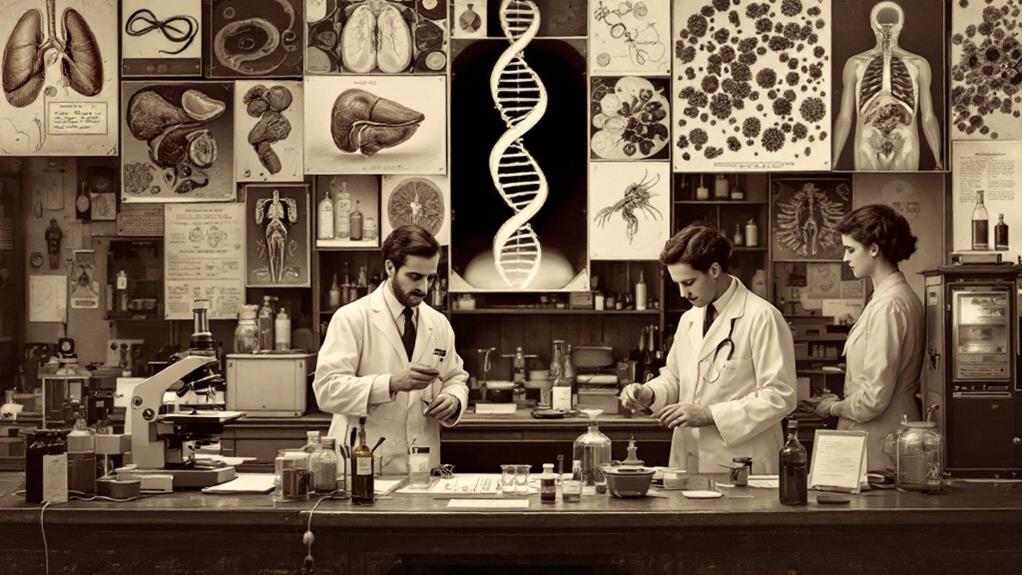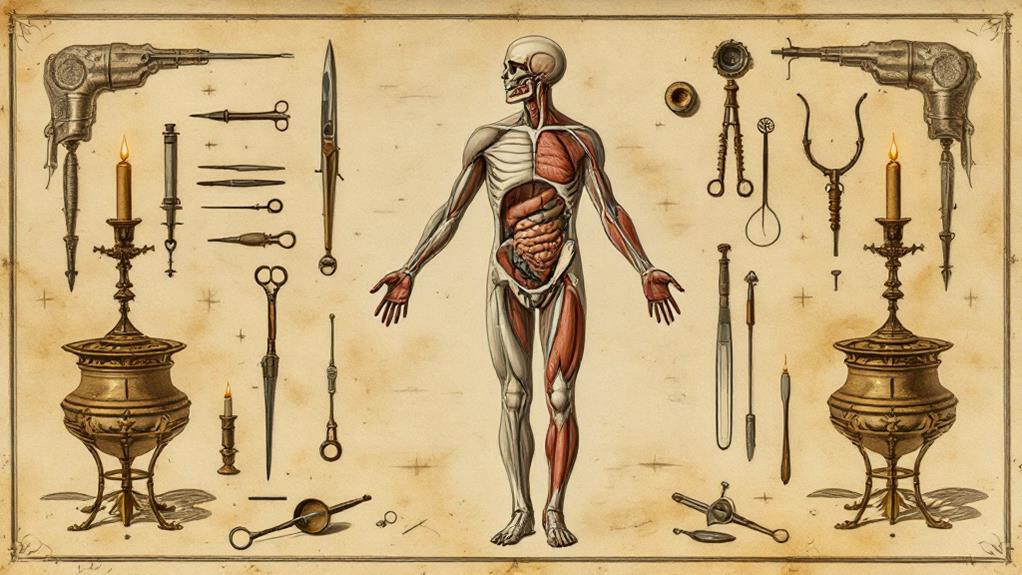The History of Genetics: From Mendel’s Peas to DNA Sequencing
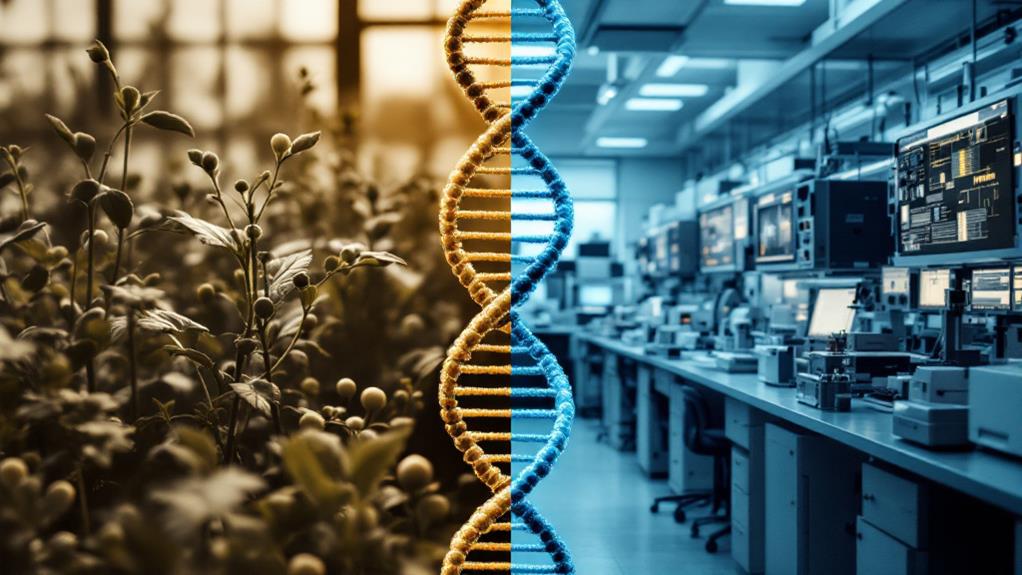
The history of genetics starts with Gregor Mendel's pea plant experiments in the mid-1800s, uncovering fundamental inheritance principles. His work, rediscovered in 1900, laid the foundation for classical genetics. Scientists then linked chromosomes to Mendel's theories, explaining inheritance patterns. The identification of DNA as genetic material and cracking its code revolutionized the field. Gene sequencing technologies, from Sanger sequencing to next-generation methods, have enabled entire genome analysis. Today's genomics revolution offers unparalleled perspectives into genetic composition, disease associations, and evolutionary past. This voyage from simple pea plants to complex DNA sequencing has transformed our understanding of life itself. Exploring further will reveal the fascinating details of this scientific odyssey.
Gregor Mendel's Groundbreaking Experiments
Though many scientists had studied heredity before him, Gregor Mendel's experiments with pea plants in the mid-1800s laid the foundation for modern genetics. As an Augustinian friar in what's now the Czech Republic, Mendel meticulously crossbred pea plants with different traits, such as seed shape and flower color. His work spanned nearly a decade, involving thousands of plants.
Mendel's brilliant observations led him to uncover fundamental principles of inheritance. He noticed that certain traits appeared in predictable ratios across generations, leading to his concept of dominant and recessive genes. You'll find that Mendel's remarkable perceptions included the idea that traits are passed down as discrete units, now known as genes.
Despite publishing his findings in 1866, Mendel's work went largely unnoticed until the early 1900s. It was then that other scientists rediscovered his research, recognizing its significance. Today, you'll see Mendel's laws of inheritance as the cornerstone of genetic studies. His methodical approach and statistical analysis set a new standard for scientific research, paving the way for the field of genetics as we know it.
Rediscovery of Mendel's Work
Mendel's pioneering work lay dormant for nearly 35 years before its rediscovery in 1900. You might wonder how such innovative research could go unnoticed for so long. The answer lies in a combination of factors, including Mendel's obscure position as a monk and the scientific community's focus on other theories of inheritance.
In 1900, three botanists independently rediscovered Mendel's work: Hugo de Vries, Carl Correns, and Erich von Tschermak. They were studying inheritance patterns in plants and came across Mendel's paper on pea plant variations. These scientists recognized the significance of Mendel's findings and how they explained the monastic inheritance patterns they'd observed.
The rediscovery of Mendel's work sparked a renewed interest in genetics. Scientists began replicating his experiments with pea plants and other organisms, confirming his laws of inheritance. This led to the development of classical genetics and laid the foundation for modern genetic research. You can trace the rapid advancement of genetics in the 20th century directly back to this critical moment when Mendel's work was brought to light and given the recognition it deserved.
The Chromosome Theory
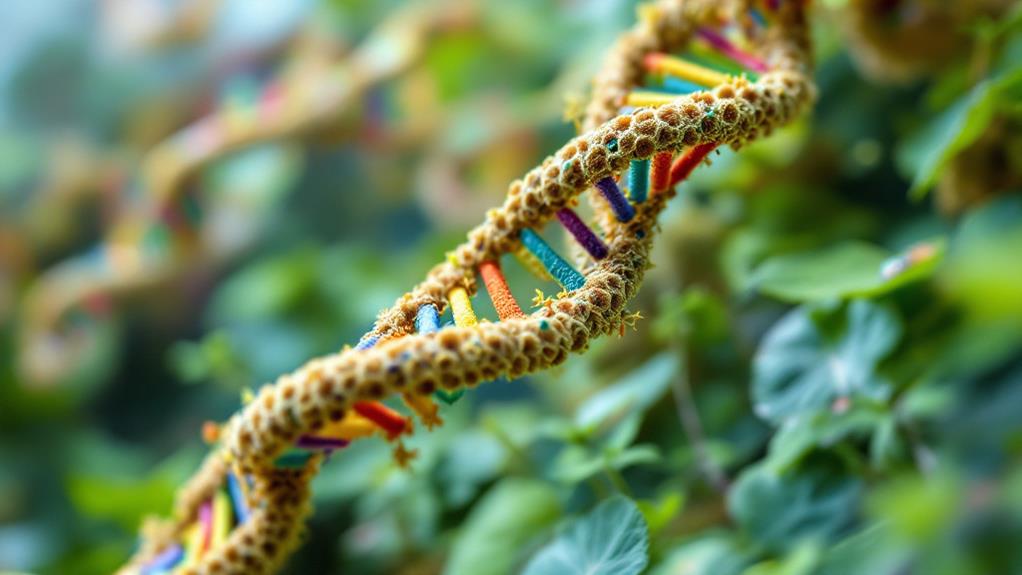
Following the rediscovery of Mendel's work, scientists began to investigate the physical basis of inheritance. In the early 1900s, researchers observed that chromosomes behaved similarly to Mendel's hypothetical factors during cell division. This led to the development of the Chromosome Theory of Inheritance, which proposed that genes are located on chromosomes.
You'll find that chromosome structure played a pivotal role in this theory. Scientists uncovered that chromosomes are composed of DNA and proteins, with genes arranged linearly along their length. This linear organization of genes on chromosomes explained why certain traits are often inherited together.
As research progressed, you'd have seen that chromosome organization became a focal point. Scientists identified that homologous chromosomes pair up during meiosis, allowing for the exchange of genetic material. This process, called crossing over, explains why offspring can have combinations of traits not seen in their parents.
The Chromosome Theory provided a physical explanation for Mendel's laws and laid the foundation for modern genetics. It's helped us understand how traits are passed from generation to generation and has been instrumental in advancing fields like genetic engineering and medicine.
DNA: The Molecule of Life
The unearthing of DNA as the genetic material marked a revolutionary turning point in genetics. You'll find that this uncover transformed our understanding of how cellular components function and interact. Scientists had long suspected that chromosomes contained the key to genetic information storage, but it wasn't until the 1940s that DNA was identified as the molecule responsible.
Oswald Avery's pioneering experiments with pneumococcus bacteria in 1944 provided the first concrete evidence that DNA, not proteins, carried genetic information. This revelation challenged the prevailing belief and set the stage for further investigations. In 1952, Alfred Hershey and Martha Chase's work with bacteriophages conclusively demonstrated DNA's role in heredity.
The crowning achievement came in 1953 when James Watson and Francis Crick proposed the double helix structure of DNA. Their model explained how genetic information could be stored, replicated, and passed on to future generations. This breakthrough opened the floodgates for understanding gene expression, mutation, and the genetic basis of diseases. It's laid the foundation for modern molecular biology and continues to drive advancements in fields like genetic engineering and personalized medicine.
Cracking the Genetic Code
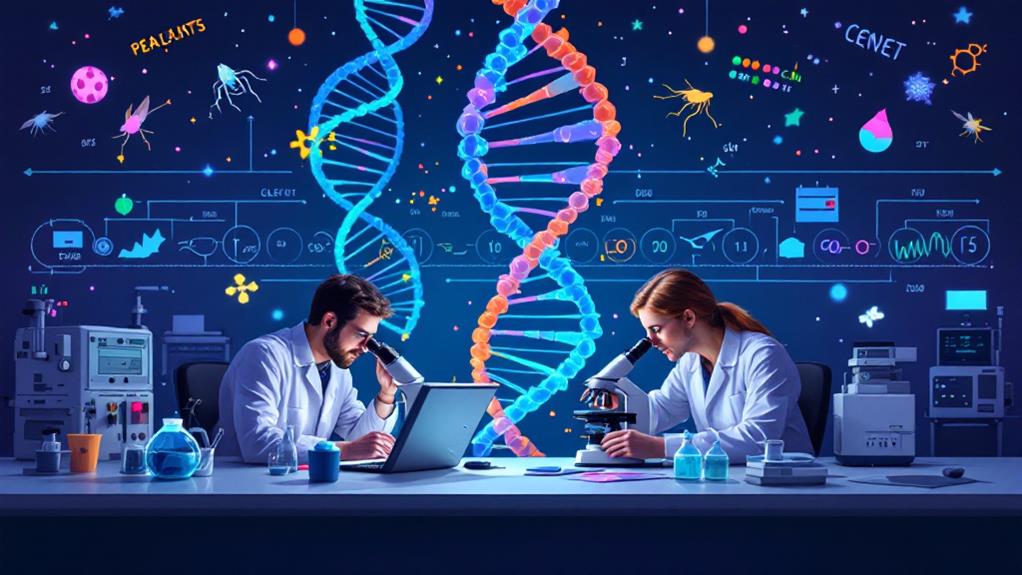
Deciphering the genetic code became the next major challenge after untangling DNA's structure. Scientists knew that DNA contained instructions for making proteins, but they didn't understand how this information was translated. In the 1950s and 60s, researchers worked tirelessly to crack this code.
You might wonder how they tackled this puzzle. They uncovered that DNA's instructions are first transcribed into RNA, which then serves as a template for protein synthesis. This process, known as transcription and translation, forms the basis of the genetic code. Scientists found that three-letter sequences of nucleotides, called codons, correspond to specific amino acids - the building blocks of proteins.
Marshall Nirenberg and Heinrich Matthaei made a breakthrough in 1961 by creating an artificial RNA sequence and observing which amino acid it produced. This experiment opened the floodgates, and within a few years, researchers had deciphered all 64 possible codons. You can now see how this disclosure revolutionized our understanding of genetics, enabling us to read the instructions contained within DNA and facilitating modern genetic engineering and personalized medicine.
Gene Sequencing Technologies
Once scientists cracked the genetic code, they faced a new challenge: reading the vast sequences of DNA in living organisms. This led to the development of gene sequencing technologies, which have revolutionized our understanding of genetics and opened up new possibilities in medicine and biotechnology.
In the 1970s, you'd have seen the emergence of Sanger sequencing, the first widely used method for determining DNA sequences. This technique allowed researchers to read short stretches of DNA, paving the way for genetic mapping projects. As technology advanced, newer methods like shotgun sequencing and next-generation sequencing emerged, dramatically increasing the speed and efficiency of DNA analysis.
These advancements have enabled scientists to sequence entire genomes, including the human genome, in a matter of days or hours. You can now access detailed information about your own genetic makeup through consumer DNA testing services. Beyond just reading DNA sequences, modern technologies can also detect epigenetic changes, which are modifications to DNA that affect gene expression without altering the underlying sequence. This has provided meaningful perspectives into how environmental factors influence our genes and health.
The Genomics Revolution

In light of rapid advancements in gene sequencing technologies, a fresh chapter in genetics has dawned: the genomics revolution. You're now witnessing an era where entire genomes can be mapped and analyzed, offering unparalleled insights into the complex world of genetics.
The genomics revolution has brought about significant changes in how we comprehend and approach genetic research:
- Genome mapping has become faster and more affordable, allowing scientists to study the genetic makeup of various organisms in greater detail.
- Researchers can now investigate epigenetic modifications, uncovering how environmental factors influence gene expression without altering DNA sequences.
- Large-scale genomic studies have revealed new connections between genes and diseases, laying the groundwork for personalized medicine.
You'll find that this revolution has far-reaching implications beyond just human health. It's transforming fields like agriculture, conservation, and evolutionary biology. As you delve into the genomics revolution, you'll discover how it's reshaping our understanding of life itself, from the molecular level to entire ecosystems. The ability to analyze vast amounts of genetic data is opening doors to new treatments, improved crop yields, and a deeper comprehension of our shared evolutionary history.
